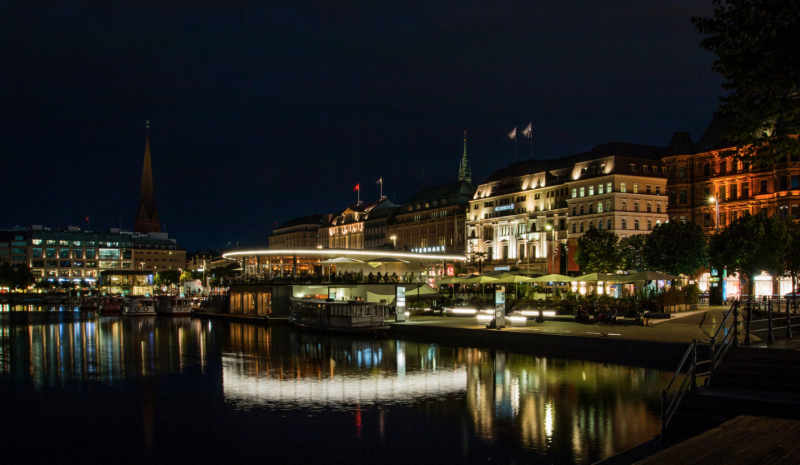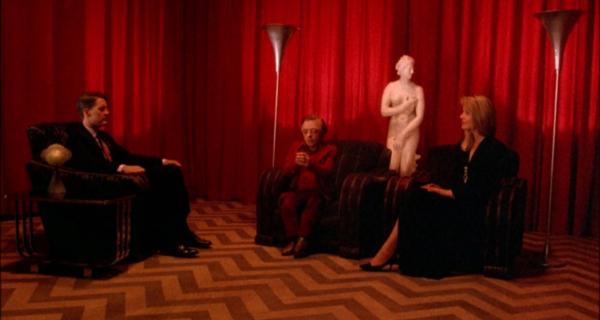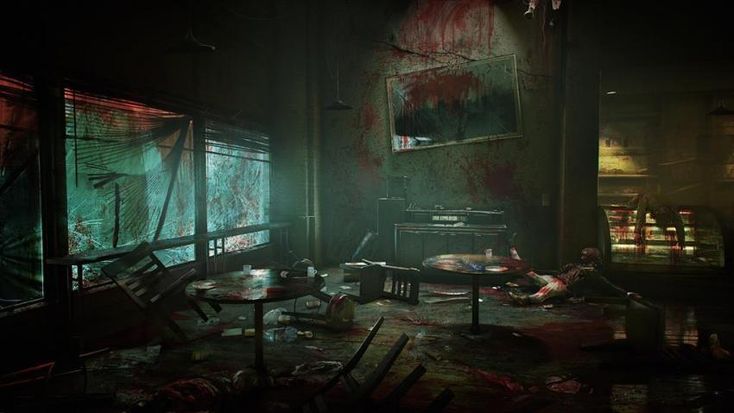- Old-School Essentials Sword & Sorcery West Marches campaign set in Kaendor, exploring the ancient ruins of the northern forests which have only recently begun to being settled by groups of people fleeing the reach of the sorcerer kings in the south.
- Iridium Moons: Coriolis homebrew Space Opera campaign about two merchant cartels fighting over who is going to have a monopoly on trade after the last large mining company pulls out of the sector, and their attempts to make the many small independent mines completely economically dependent on them.
- Shadows of the Sith Empire: A Star Wars d6 campaign set after the Dark Side ending of Knights of the Old Republic, in which a new Sith Empress controls a quarter of the Old Republic’s systems and is sending her agents out to search for lost ancient Sith texts that hold the secret of how Marka Ragnos and his predecessors managed to hold their empire together and how she might prevent her own apprentices from inevitably turning against her.
- The Outer Rim: A Star Wars d6 campaign set right after the destruction of the Death Star at the height of the Empire’s power. The party consists of former senatorial aides and guards and imperial officers who have fled to hide in the Outer Rim among the smugglers, scoundrels, and gamblers to escape the purges in the core worlds. Meanwhile the new Moff of Enarc has decided to establish order in the space between Sullust and Tatooine by putting an end to the fighting over spice smuggling between the Hutts and Black Sun. Imperial crackdowns and increased fighting between the two syndicates to be the one that gets to keep the region for itself only increases the chaos and raises sympathy for a rebellion against the empire.
- The Heart of Darkness: Dungeons & Dragons Planescape campaign that focuses on the rarely visited planes Beastlands, Ysgard, Pandemonium, Carceri, and Gehenna and revolving around an arcanaloth, a rogue asura with an army of Fated, the Revolutionary League, and the Doomguard trying to gain control over a terrible artifact of entropy.
- Murky Waters: A Mutant: Year Zero campaign set in the islands that are left of Denmark, Northern Germany, Northern Poland, and Southern Sweden after an 80m sea level rise. The mainland is completely uninhabitable by clouds of deadly fungus spores, but the salt of sea water keeps the fungus from taking hold on small islands in the stormy sea.
- Sankt Pauli bei Nacht: Vampire campaign set in Hamburg, with a brewing conflict between old Ventrue shipping magnates and Bruja activists over which neighborhoods are their rightful territory as gentrification changes the social environment. With Malkavians claiming the rowdy entertainment district in the harbor, and a gang of Nosferatu the subway systems. And going all the way back to the concepts of the first edition, it’s actually going to be personal horror.
Tag: Vampire
The weird Demographics of Vampire populations
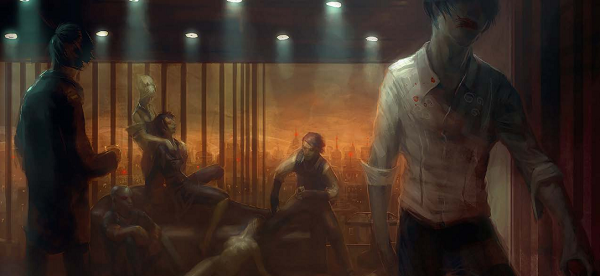 One thing that has always been left very unclear about Vampire: The Masquerade (maybe in part deliberately) is the question of the scale at which the vampire society of a given domain exists. To some degree, the concept of the World of Darkness is pulling in two opposing directions. On the one hand, the game has for a very long time been promoted as “a game of personal horror”. Horror is inherently dependent on a sense of isolation and vulnerability, and the rulebooks make it clear throughout all editions that vampires are generally solitary loners who usually don’t want to have much to do with each other. But on the other hand, it’s also really big on the concept of Clans as interconnected organizations in conflict both with each other and among themselves in a global struggle that spans centuries. And on top of that are even older vampires that hide in the shadows and pull the strings of hundreds of unwitting pawns who consider themselves to be the lords of the night. So what is it? Bleak isolation or tightly knit families?
One thing that has always been left very unclear about Vampire: The Masquerade (maybe in part deliberately) is the question of the scale at which the vampire society of a given domain exists. To some degree, the concept of the World of Darkness is pulling in two opposing directions. On the one hand, the game has for a very long time been promoted as “a game of personal horror”. Horror is inherently dependent on a sense of isolation and vulnerability, and the rulebooks make it clear throughout all editions that vampires are generally solitary loners who usually don’t want to have much to do with each other. But on the other hand, it’s also really big on the concept of Clans as interconnected organizations in conflict both with each other and among themselves in a global struggle that spans centuries. And on top of that are even older vampires that hide in the shadows and pull the strings of hundreds of unwitting pawns who consider themselves to be the lords of the night. So what is it? Bleak isolation or tightly knit families?
The Camarilla consists of seven clans, and while not every city would need to have a strong presence of all seven, I think most players and GMs would want to have all of them represented in their campaigns to t least make them options for player characters. Then each clan also has elders of the 7th or 8th generation, while the default generation for PCs is 13th, which are the most common vampires. And there’s also a growing number of vampires of the 14th and 15th generation in recent decades. That means that clan would have members of 6 to 9 different generations. Even if you have only one vampire per generation per clan, you’re already starting with about 50 vampires. That is a pretty large community.
Population Sizes
Quite early on, a rough estimate was mentioned that the Camarilla considers 1 vampire per 100,000 humans a good number to not cause any occasional killings by vampires to raise suspicion or interest. The number is widely dismissed as not being really based on anything, but it’s the only number there is. Combine it with 50 vampires that inhabit a domain, and you would need an urban area of 5 million humans. (City borders are a human administration thing, vampires only care where the rural country side starts.) And when you look at the US, Canada, and Mexico, where most of the published material for the game is set, you get 11 urban areas that lie above that number (in the mid 2010s). For smaller vampire communities of 20 to 50 vampires, you get another 20 domains. That actually seems pretty workable.
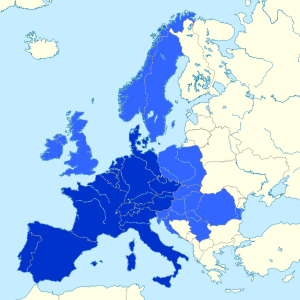
However, things get wonky when you apply the same assumptions to Europe. As it turns out, the population in Europe is more evenly spread out. Even though the balance between urban and rural population is about the same (~80/20), European countries tend to have more mid-sized cities instead of a few giant ones. In an area with a comparable population of humans, there are only 5 urban areas that pass the 5 million people mark, and another 14 above the 2 million people mark. That would mean that America could maintain +50% more vampire communities of at least 20 vampires, and more than twice as many communities of at least 50 vampires. And with the Cainites having been established in Europe ten times longer than in North America, that just feels wrong. Europe should be the heart of the Western Vampire World.
However, there is another important difference. As the saying goes “In Europe, a hundred miles is a long distance. In America, a hundred years are a long time”. The area from England, through the Low Countries, Western Germany, and to Northern Italy has a population like the US East Coast but at only a third the length. Getting from one major city to another can be a lot quicker than getting from the outskirts to the city center during high traffic in a lot of places. I think for campaigns set in Europe, there needs to be a different image of what the domain of a prince looks like. Instead, you could have domains consisting of dozens of smaller cities that all can support only one or two vampires each. Or a prince who holds dominion of four cities that are each home to half a dozen vampires. In the most densely inhabited areas, there is very little empty space that could truly be considered rural by American standards.
Age Distribution
Another interesting topic is the matter of generations. As the books explain, when the vampires decided to go into hiding and disappear from the human world at the end of the Middle Ages, it became a necessity to move to the cities, where more people would be out on the streets after night, and stories of attacks and death seen as nothing that unusual. While a vampire can easily survive by feeding on just a few dozen humans, doing so without ever noticing a pattern of strange sightings and disappearances requires hiding among thousands of humans. So even while the human population in Europe increased significantly over the centuries, the number of vampires would not have risen with them and remained stagnant, if not even decline as killed vampires were not replaced in already overcrowded cities. And it was in this context that some vampires chose to try their luck with risking the highly dangerous journey to the New World.
The vampires with the most to gain by migrating to America would have been the ones with the least to loose. Which in the society of the Camarilla means the youngest one. The new Masquerade and threat of werwolves in the countryside made vampires mostly confined to cities, and the laws created by the Camarilla elders to ensure that no infighting among vampires would raise the suspicions of mortals also just happened to protect the interests of the same elders against young upstarts trying to get their own slice of the pie. Those 8th generation elders who are now princes in America would still have been neonates less than a century old when they first came to the colonies, to later be joined by a slow trickle of 9th and 10th generation vampires.
While Europe saw a significant population growth in the last two centuries, the boom in North America at the same time was on a considerably different scale. From 1870 to 2000, the population in Western Europe roughly doubled in size. In the same period, the population of the United States increased eight times. Much of it driven by new immigration. But in my own opinion, that migration of humans would not have been mirrored by an equal migration of vampires. Crossing the open ocean on a ship, crammed with hundreds of people for weeks is extremely dangerous, and even when you get to your destination you start with no contacts and no shelter. Instead, the growth of the American vampire population would have come from local vampires creating new fledglings in large numbers. Even if the oldest vampires of the 8th generation want to create new childer, they would only be 9th generation themselves. And most new vampires would be created by younger vampires who had no childers yet of their own. It’s easy to see the ranks of 11th, 12th, and 13th generation vampires explode alongside the human population.
In Europe, the situation would be different. Almost all the 6th and 7th generation vampires would have stayed in their well established domains, together with a majority of 8th generation vampires. So my view is that in Europe the total amount of Elder vampires is several times larger than in America. But since we are comparing two areas of similar human populations with similar degrees of urbanization, the total amount of all vampires would be the same. At the same time, with human population growth being only a quarter the rate as in America, the growth of the vampire population would have been much more limited as well. Quite likely Europe would have been overcrowded by old vampires at the same time as America had huge potential for growth, so the vampire population in Europe might not have grown at all. I can totally see many European princes decided that keeping the vampire population the same while the human population doubles makes maintaining the Masquerade much less stressful. The books talk about American neonates being miffed at not being able to create new fledglings any time they want. In Europe, it would be so much worse. However, at the same time, with larger numbers of old vampires of older generations, there is still much more possibility of new vampires being added to older generations. In America, the few 8th generation elders can always only create a new 9th generation vampire. In Europe, a 6th generation vampire might still get the idea to have one more 7th generation childe to raise for the next couple of decades. This of course continues further down the line, with 9th and 10th generation fledgling being just as likely as 13th or 14th generation ones.
In Summary
I think there’s a good case for approaching vampire society in Europe quite different from how vampire society in America is described. In Europe, the urban development is more conductive to spread out and decentralized domains than the monolithic metropolis surrounded by a ring of suburbs.
The idea that there are a tiny number of elders and a large majority of neonates also doesn’t have to stay true in Europe. Populations that are roughly one third elders, ancilla, and neonates each absolutely makes sense.
While it’s not necessary, and arguing demographics and sociology in a game about undead monsters is pointless, I think it would actually be quite interesting to have America and Europe be distinctively different. I already talked about how the typical urban decay with street gangs and burning cars does not really feel right for a darker and twisted Germany. Having different regions feel actually different is much more interseting and exciting than simply switching all KFCs for Nordsees.
Vampire: The Masquerade: Northeast Passage
On the Reeperbahn, late half past one
If you got a girl, or got none
You will have great fun, that’s the way it’s done
On the Reeperbahn, late half past oneWho never in one cozy night
Strolled past the Reeperbahn’s lights
Is a sorry sod, ’cause he knows you not
Oh my Saint Paul’s, my Saint Paul’s by Night
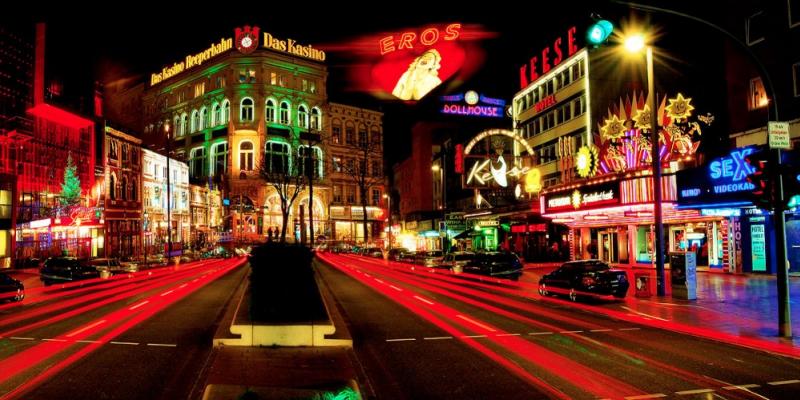 Basically as soon as I started considering working on a Vampire campaign, I decided that it would have to be set in Hamburg. The premise of the game requires that it’s set in a major city (unless your deliberately want to run a nonstandard campaign), and every time I start worldbuilding on something, I always take a few moment to think if there’s anything from the Baltic Sea region that I can use. We almost never get to see our regional history an heritage make an appearance anywhere. The only thing you ever get is Vikings, and even those seem to always be shown far away from home. Hamburg is the biggest city in Northern Europe between London and Saint Petersburg, and it also happens to be where I was born and lived as a kid for 10 years (and I still pass through there pretty regularly). So it really was the obvious choice with no other contestants. And it turns out to actually have a lot of recent history that is great material for a Vampire campaign.
Basically as soon as I started considering working on a Vampire campaign, I decided that it would have to be set in Hamburg. The premise of the game requires that it’s set in a major city (unless your deliberately want to run a nonstandard campaign), and every time I start worldbuilding on something, I always take a few moment to think if there’s anything from the Baltic Sea region that I can use. We almost never get to see our regional history an heritage make an appearance anywhere. The only thing you ever get is Vikings, and even those seem to always be shown far away from home. Hamburg is the biggest city in Northern Europe between London and Saint Petersburg, and it also happens to be where I was born and lived as a kid for 10 years (and I still pass through there pretty regularly). So it really was the obvious choice with no other contestants. And it turns out to actually have a lot of recent history that is great material for a Vampire campaign.
Hamburg
As a major city with a metropolitan area of 5 million people, Hamburg obviously qualifies as a perfect setting for a Vampire campaign. But once I started looking up various barely remembered details from places I remember from my childhood, I rediscovered so many things that not only make it suitable but amazing for that task.
While not nearly as old as the Roman cities in southern Germany, Hamburg has a long history that stretches back over a thousand years. The city really came into its prime with the rise of the Hanseatic League in the 13th century. Merchants from many important port cities on the Baltic and North Seas formed an extensive network of relationships that eventually grew into something akin to one of the world’s earliest megacorporations. In many of these cities, the Hanse merchants formed their own aristocratic class that often came to govern the ports as independent or autonomous republics. The capital of the League was in nearby Lübeck, which with modern city growth and transportation infrastructure is now part of the Hamburg metro area. In the Holy Roman Empire, Hamburg and Lübeck were among a small number of cities that had no lords and owed allegiance only to the Emperor himself. This arrangement lasted until the 1920s, and even today the city of Hamburg is one of the 16 states of Germany, only one administrative level below the Federal Government. The merchant aristocracy of Hamburg was so proud that they would not accept any medals or join any orders of foreign powers, as they would recognize no authority other than their own. There really is no doubt: In the World of Darkness, the Hanseatic League was undisputed Ventrue territory.
Early on in the 30 Years War, Hamburg invested heavily in new massive fortifications to surround the entire city, and it was one of the few major cities in the Empire that were never besieged or pillaged, but still had the war come right to its doorsteps during Wallenstein’s campaign against the Danish king Christian, whose possessions included the northernmost parts of the Empire. Hamburg and Lübeck marked the greatest extend of Naploeon’s empire in the North at the start of the 19th century. After a great fire in 1842, the rebuilding of Hamburg led to a great industrial boom. Growing into the third largest port in Europe and becoming the gateway for emigrants to America and where exotic goods from around the world would come into Germany.
24 Then the Lord rained sulfur and fire out of the sky from the Lord on Sodom and Gomorrah, 25 overthrowing those cities, all of the plain, and everyone who lived in the cities. He also destroyed the plants that grew out of the ground.
– Genesis 19
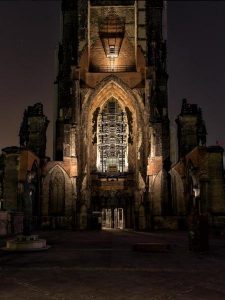
In 1943, the British Royal Air Force launched Operation Gomorrah, and for a full week they attacked Hamburg with incendiary bombs. One night the relentless bombing exceeded their wildest expectation, with the inferno turning into a giant tornado of flames that incinerated much of the city. Later the amount of destruction and deaths from the atomic bomb in Nagasaki would be rated as “not nearly as bad as Hamburg”. Along with tens of thousands of humans, the fire destroyed a majority of the city’s vampires, including many elders of many centuries. There are few things that scare ancient empires, but this night haunts those who survived to this very day. Not even 20 years later, Hamburg suffered a great flood that devastated the poorest parts of the city in the South, there the old dykes had still not been properly repaired. Since then, things have been looking upward for the city.
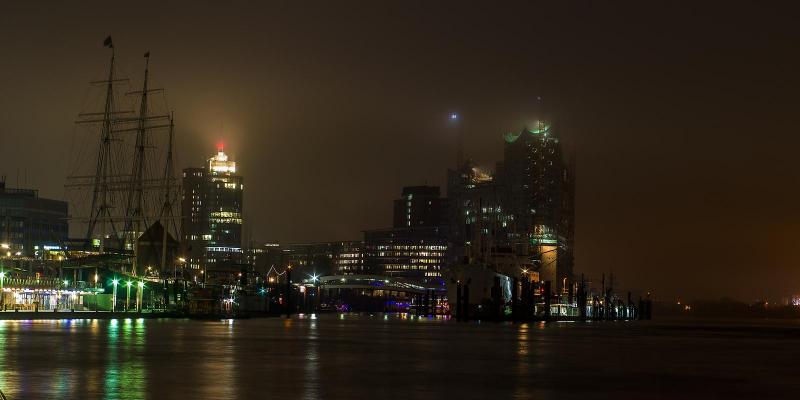 Hamburg by Night
Hamburg by Night
The classic style of Vampire: the Masquerade is one of urban decay and street gangs. While this was a very contemporary style in 90s America, it just really doesn’t make any sense for Hamburg in the 2020s. You could do such a version of Hamburg, but it just wouldn’t reflect the character of the city, even in a darker and more twisted way. With most of the historic buildings being completely destroyed by the two fires in 1842 and 1943, most of the current city only 70 years old. And with the hastily constructed concrete blocks from the 50s now showing their age and being considered eyesores, the city is giving itself a makeover of shiny glass and gleaming lights. It just looks very modern and crisp, with a booming economy. Industrial ruins and burning cars simply don’t fit into this place.
But even with such a shining exterior, there is absolutely room to fill it with evil and corruption. There are persistent stereotypes and jokes about German society and culture, which are so persistent because they are not exactly wrong. They don’t get it quite right and miss many of the finer nuances, but there is a lot of truth to that. And even with Germany as a whole, the “Northern Lights” have a reputation for being dour, joyless, and lacking in courtesy. In my experience, “Germany” is really just a language area. Culturally, people in Schleswig-Holstein, Hamburg, and Mecklenburg are Scandinavian. When we look South and see the Rhur Area with its Karneval, and Bavaria with its Oktoberfest, we just think they are all mad and an embarrassment to the whole county. It’s not that we mean to be rude or have no sense of humor or enjoying fun, but our regional culture puts a much greater emphasis of giving other people their space and being unobtrusive. We like not being bothered and extend that common courtesy to others.
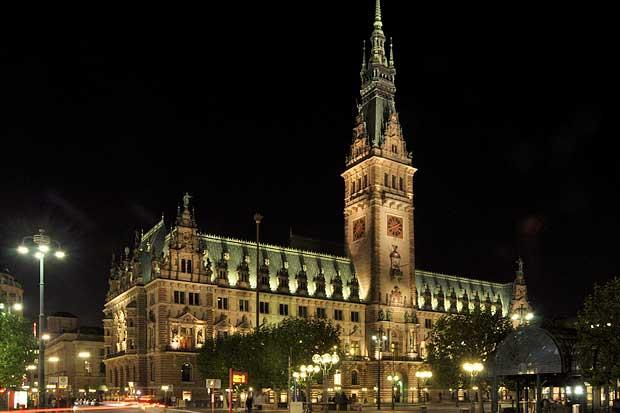
But even so, it does take very little to go from courtesy to callousness. There is only a small step between not being nosy and willful ignorance, and between not rocking the boat and complacency. It’s easy to find yourself kicked out into the freezing rain. And the 1930s were not our proudest moments. This version of Hamburg that I am going for is one of order and oppression, but not enforced by police with clubs, but by social pressure. The police is not the hand of the oppressor, but the foot of the people, put down on those trying to disrupt a good thing. Corruption is not a serious concern of the people, as you don’t see it unless you want to. It’s not the drugs that bother people, but the junkies passed out on the sidewalks. Fighting crime is not about dealing with the causes, but removing it from sight.
Hamburg is an old Ventrue city. Shaped just as much by the vampires who infest it, as they are shaped by it. It is orderly, efficient, and makes a whole lot of money. It’s running smoothly, and the masses just hovering ever so slightly above poverty is by design. People who can’t afford to lose their job don’t ask questions or make demands. With Ventrue pulling many of the leavers that control the city, “Human Resources” take on the full horrific meaning that the term implies. The city and its industry does not serve the people. The people are the fuel and the grease that make the city run.
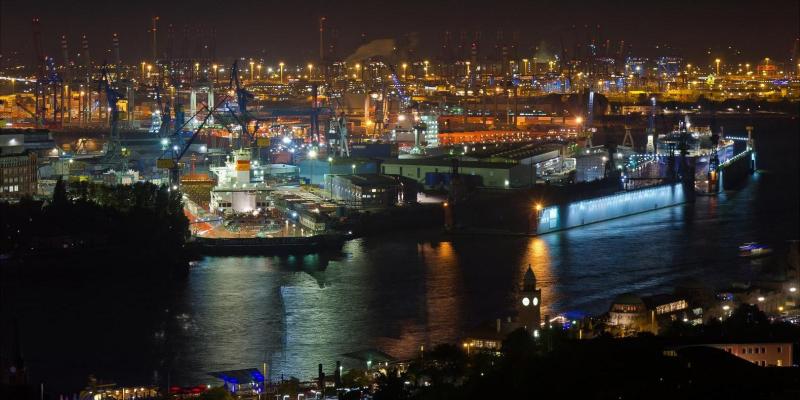 A City of Steel and Sin
A City of Steel and Sin
While Hamburg is generally not considered to be among the fancy global cities of Europe, like London, Paris, Berlin, or Moscow, it is still a quite impressive place of its own.
The port of Hamburg is the third largest in Europe, after Rotterdam and Antwerp. Aside from its massive container terminals, it also includes several shipyards and oil refineries on the south side of the Elbe. Hamburg is also the site of the largest copperworks in Europe, an Airbus production site, and countless machine factories. It also has a major airport and a main train station with 12 platforms inside a single 150m long and 75 meter wide hall of steel beams and glass.
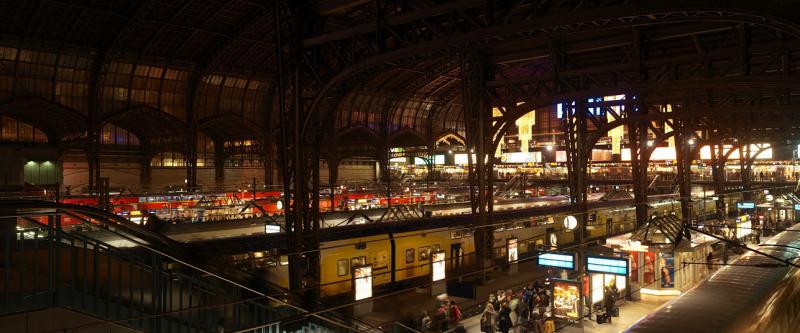 Hamburg is also home to the second largest cemetery in the Old World. Most cemeteries have a but stop. Hamburg Ohlsdorf has its own two bus lines with 24 stops. Right nearby are the Fuhlsbüttel prison and the Ochsenzoll Asylum, making for a quite unique neighborhood.
Hamburg is also home to the second largest cemetery in the Old World. Most cemeteries have a but stop. Hamburg Ohlsdorf has its own two bus lines with 24 stops. Right nearby are the Fuhlsbüttel prison and the Ochsenzoll Asylum, making for a quite unique neighborhood.
The Reeperbahn in the St. Pauli neighborhood is probably the second most famous Red Light District in Europe after Amsterdam. Originally the area started as a shanty town outside the walls of the cities Hamburg and Altona and became the home to all trades that were forbidden inside the cities. In the 1920s it fancied itself to be a glitzy and glamorous entertainment district the likes of Berlin, but after the war it was never properly redeveloped and turned into a crime-infested slum. In recent decades great efforts have been made to straighten it up and return it to its glory days. But it never lost its pride in its self proclaimed title as “The most sinful mile in the world.”
Synthwave-Noir is the new Gothic-Punk
Vampire: The Masquerade was created at the start of the 90s, with the first rulebook explaining it’s stylistic and aesthetic vision as “Gothic-Punk”. Some years ago, I had a long discussion with several people about the very question if this overall dominant style dates the game so much as a product of the 90s that it would no longer work for current groups of players unless you deliberately aim for retro-nostalgia. I think it was when I saw something or another about Bloodlines 2 (a Vampire videogame currently in development), that I had the thought whether the Synthwave aesthetic of recent years could be a viable way to transform Vampire into something that evokes very similar conceits in the present day.
 Synthwave is a electronic music style that came to prominence in the late 2000, which makes heavy use of synthesizer sounds that strongly evoke the sound of 80’s electronic pop, and was hugely influenced by the music from the movie Blade Runner. But it uses these references and influences as a starting point for something that is new and actually quite different rather than being actual 80s retro music. For reasons unknown to man, Synthwave also has an extremely distinctive aesthetic for album covers, dominated by abstracted vector-graphic shapes in bright pink, blue, and orange.
Synthwave is a electronic music style that came to prominence in the late 2000, which makes heavy use of synthesizer sounds that strongly evoke the sound of 80’s electronic pop, and was hugely influenced by the music from the movie Blade Runner. But it uses these references and influences as a starting point for something that is new and actually quite different rather than being actual 80s retro music. For reasons unknown to man, Synthwave also has an extremely distinctive aesthetic for album covers, dominated by abstracted vector-graphic shapes in bright pink, blue, and orange.
 While I personally think it’s very cool music, it also has a strong overlap with various visual arts. Probably the two most influential places where Synthwave got mainstream exposure are in the movie Drive from 2011 and the videogame Hotline Miami in 2012, both of which combine extremely brutality with detached coldness in a world of extremely evocative colors and lighting. Again, it is a style that is very reminiscent of Blade Runner, which also just got it’s own return in 2017, again with stunning visuals and sound. A similar style was also used earlier in Collateral from 2004, and in the super successful John Wick movies.
While I personally think it’s very cool music, it also has a strong overlap with various visual arts. Probably the two most influential places where Synthwave got mainstream exposure are in the movie Drive from 2011 and the videogame Hotline Miami in 2012, both of which combine extremely brutality with detached coldness in a world of extremely evocative colors and lighting. Again, it is a style that is very reminiscent of Blade Runner, which also just got it’s own return in 2017, again with stunning visuals and sound. A similar style was also used earlier in Collateral from 2004, and in the super successful John Wick movies.
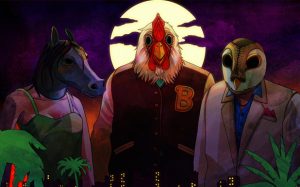 I think Neo-Noir and Synthwave in 2020 are really the spiritual successors that Gothic and Punk where in 1990. Back then, the name of the game was radical extravagance. Clothing, hairstyles, and makeup all carefully crafted to the smallest detail to be as eye catching and provocative as possible. Punks look dirty and sit on the curb with broken beer bottles, but their outfits are as deliberately designed and customized as the most dolled-up goth. Make no mistake, goths are totally aware that their outfits with full war paint makes them look like lunatic weirdos to most people. That’s entirely the point. And I think this is something that doesn’t really translate properly into the 21st century. It no longer comes across as edgy, just silly. Street gangs are no longer the boogeymen of the middle class, and today’s youth has more serious concerns than rebellion without a plan against the establishment. Maybe society has become more open to individual expression as well, and when your outfit can no longer provoke the boomers, then what’s the point of spending all these hours on it?
I think Neo-Noir and Synthwave in 2020 are really the spiritual successors that Gothic and Punk where in 1990. Back then, the name of the game was radical extravagance. Clothing, hairstyles, and makeup all carefully crafted to the smallest detail to be as eye catching and provocative as possible. Punks look dirty and sit on the curb with broken beer bottles, but their outfits are as deliberately designed and customized as the most dolled-up goth. Make no mistake, goths are totally aware that their outfits with full war paint makes them look like lunatic weirdos to most people. That’s entirely the point. And I think this is something that doesn’t really translate properly into the 21st century. It no longer comes across as edgy, just silly. Street gangs are no longer the boogeymen of the middle class, and today’s youth has more serious concerns than rebellion without a plan against the establishment. Maybe society has become more open to individual expression as well, and when your outfit can no longer provoke the boomers, then what’s the point of spending all these hours on it?
 But while the typical Brujah and Gangrel styles may no longer be considered the cutting edge of what is cool, I think we’re currently at a point in popular entertainment that gives the stage to Ventrue and Tremere. It’s now the time of nice suits and Mercedes. When you can’t beat them, joining them starts to become attractive. Even if you first tell yourself that it’s to beat them at their own game. You also have that look in Kingsmen and the current James Bond movies, which despite being about public servants leaving carnage across the world in service for their states, really don’t have any love for authority.
But while the typical Brujah and Gangrel styles may no longer be considered the cutting edge of what is cool, I think we’re currently at a point in popular entertainment that gives the stage to Ventrue and Tremere. It’s now the time of nice suits and Mercedes. When you can’t beat them, joining them starts to become attractive. Even if you first tell yourself that it’s to beat them at their own game. You also have that look in Kingsmen and the current James Bond movies, which despite being about public servants leaving carnage across the world in service for their states, really don’t have any love for authority.
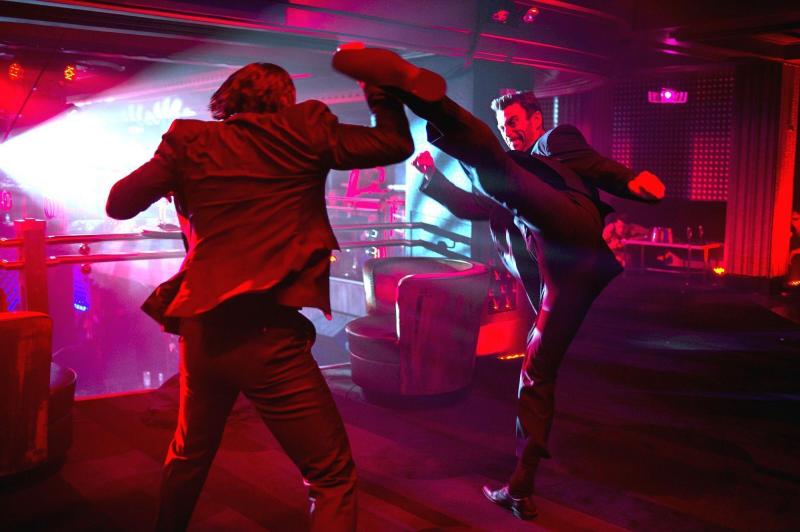
It’s probably not quite an aesthetic you can go for with an Anarch campaign. But for a campaign centered around Ventrue, Toreador, Tremere, and Lasombra, I think this is perfect! And when you think about it, John Wick and his pals are living in their own Camarilla. And vampire society in the World of Darkness has always been filled with endless parallels to organized crime.
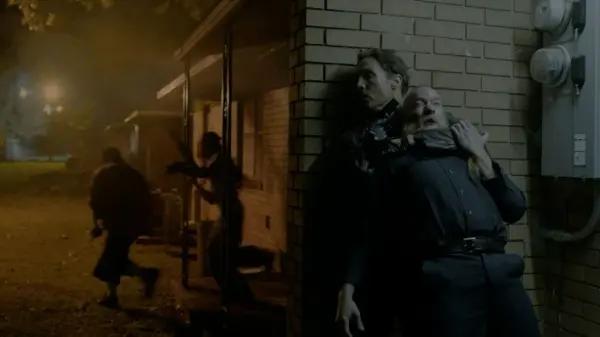 But Vampire is not only a game about politics. While it often seems to be forgotten and glossed over, it also presents itself as a game of horror. Big influences on me for what I imagine horror in my campaign to feel like are True Detective (Season 1, of course), and also Twin Peaks. I’m probably not able and also have no intention to make something as funny as David Lynch, but I really like the sense of eerie wrongness and malevolent evil in that show.
But Vampire is not only a game about politics. While it often seems to be forgotten and glossed over, it also presents itself as a game of horror. Big influences on me for what I imagine horror in my campaign to feel like are True Detective (Season 1, of course), and also Twin Peaks. I’m probably not able and also have no intention to make something as funny as David Lynch, but I really like the sense of eerie wrongness and malevolent evil in that show.
What’s so horrific about being a vampire anyway?
So in my old days, I actually started getting interested in Vampire: The Masquerade. Who would have thunk? It actually was one of the big games when I first came into RPGs at the tail end of AD&D, along with DSA, Shadowrun, Call of Cthulhu, and Legend of the Five Rings. I would have been too young for it when it came out, and already felt too old when I started looking at other games. By that time I already had it filed away as the game of leather jackets, frilly shirts, and terrible makeup. I leafed through a rulebook once, but didn’t find anything of interest back then, and basically forgot about it after that.
I don’t know how I got to that, but a few weeks ago I somehow ended up hunting down a rulebook for the 1998 Revised Edition and the 1992 Storyteller Handbook to get a glimps of how the game was originally presented, and then got the pdf for the 2012 V20 edition to have all the basic info and crunch for all 13 clans in one neat package. The game always proclaims itself to be “a storytelling game of personal horror”, but in no point in any of the three books is there any mention of what that means. Or what horror in general looks like when you play as a vampire. It says existence as a vampire is horrifying, but does not mention why. Like virtually all RPGs (except d6 Star Wars), Vampire assumes that it is completely obvious to every new gamemasters how you run a campaign, and that the setting is self-explanatory. You have superhuman powers and are immortal. Go and be scared.
But if you really comb through the text with arduous care, and keep pestering people on the internet what this game is about and what you’re supposed to do with it, there is indeed sufficient implication that it is a game about keeping hold of your humanity in the knowledge that you will turn into a monster that destroys everything still dear to you eventually, and that you’re stuck being a pawn of much more powerful people who will still be your uncaring asshole bosses centuries down the line. The game then sabotaged itself by getting sucked up in its own metaplot hype about the world ending next week, which would completely negate it’s own premise. But that’s one of the reasons I wanted to start with really old rulebooks. The initial vision and concept for games and game setting is universally much more interesting than the lore snarl that build up over time. Those are stuff for novels, but not playable game material.
But after a way too long introduction to the topic, here now my actual ideas how the premise of Vampire: The Masquerade can actually be used to make it a horror game. A fundamental part of being a Vampire is that the vampiric instincts called the Beast are completely inhuman, and that any humanity still left in a vampire is really just force of habit. Vampires act and think like people because that’s what they are used to and they are actively forcing themselves to repeat the familiar patterns of their life. But over time, keeping up these appearances becomes less and less important to a vampire, as they become nuisances and their original meaning forgotten. At the end, all that remains is a monster that has no concept of friendship or affection and exists only to kill. Not sure if the creators were thinking about it this way 30 years ago, but what this is is fear of dementia. The understanding that you will become something in the future that is horrifying to your current self. Something that you can do nothing to prevent it even while you watch it happening, until in the end you don’t even understand that anything is wrong. And on top of that you will also kill and destroy everything that matters to you and you hold dear.
But this is a very long and slow process that will stretch for centuries, unless you get killed before that. Not really something you can play out during the game. But what you can do is to have the players be confronted by the the things that await their characters in the future. You can show the players how other vampires lose the remainders of the humanity at different stages, making it clear that “this will be you”. Here’s a couple of ideas I’ve come up with myself. (Which totally should have been in the books from the start.)
- Some vampires in the city have been killed one way or another. An elder tells the PCs that a moving company will be clearing out their places, but before that they need to get over to the dead vampires homes and kill their ghouls. Can’t have mortals with knowledge of vampires out in the street uncontrolled, with a terrible craving for vampire blood. If possible, the players should know the dead vampires, and perhaps met and talked with some of the ghouls as well.
- A human friend of the PCs gets killed by another vampire. He apologizes that he didn’t know the person he killed was connected to them. He would have murdered someone else otherwise.
- A young neonate calls the PCs because he urgently needs their help. He had a little accident while feeding and now has remove a corpse before it is found by humans, and really hopes to keep the whole thing from his sire.
- The PCs are visiting another vampire at home, and as he lets them in, he apologizes that there’s still empty bodies lying around in his living room that he hasn’t cleaned up yet. Maybe rolling a corpse from the couch before offering them a seat. Or it’s wrapped in a tarp in the hall, next to a garbage bag that needs to be taken out next time he leaves.
- If you want to take it a gear higher, a vampire could have a half-empty and half-conscious vessel around that he’s keeping for later.
- The PCs are called to take part in a blood hunt for a vampire that has lost its last humanity and now threatens the Masquerade. This will be them at some point. For bonus points, make it a vampire the players know and have recently talked to.
- Diablerie is considered the most evil and horrible crime that vampires can commit against each other, as drinking all of a vampire’s blood to gain his power is believed to also devour his soul. (And it can only be done by younger vampires against older vampires, and the old vampires make the laws.) A good introduction of this concept to new players would be to show how everyone is in a frenzy because a vampire friend of the PCs has been diablerized. For bonus points, the murderer was one of their friends as well.
- During a blood hunt, a vampire the players consider to be quite decent gets really excited, because he assumes there won’t be any punishment for diablerizing the outlaw, and he has always been waiting for an opportunity to do it.

